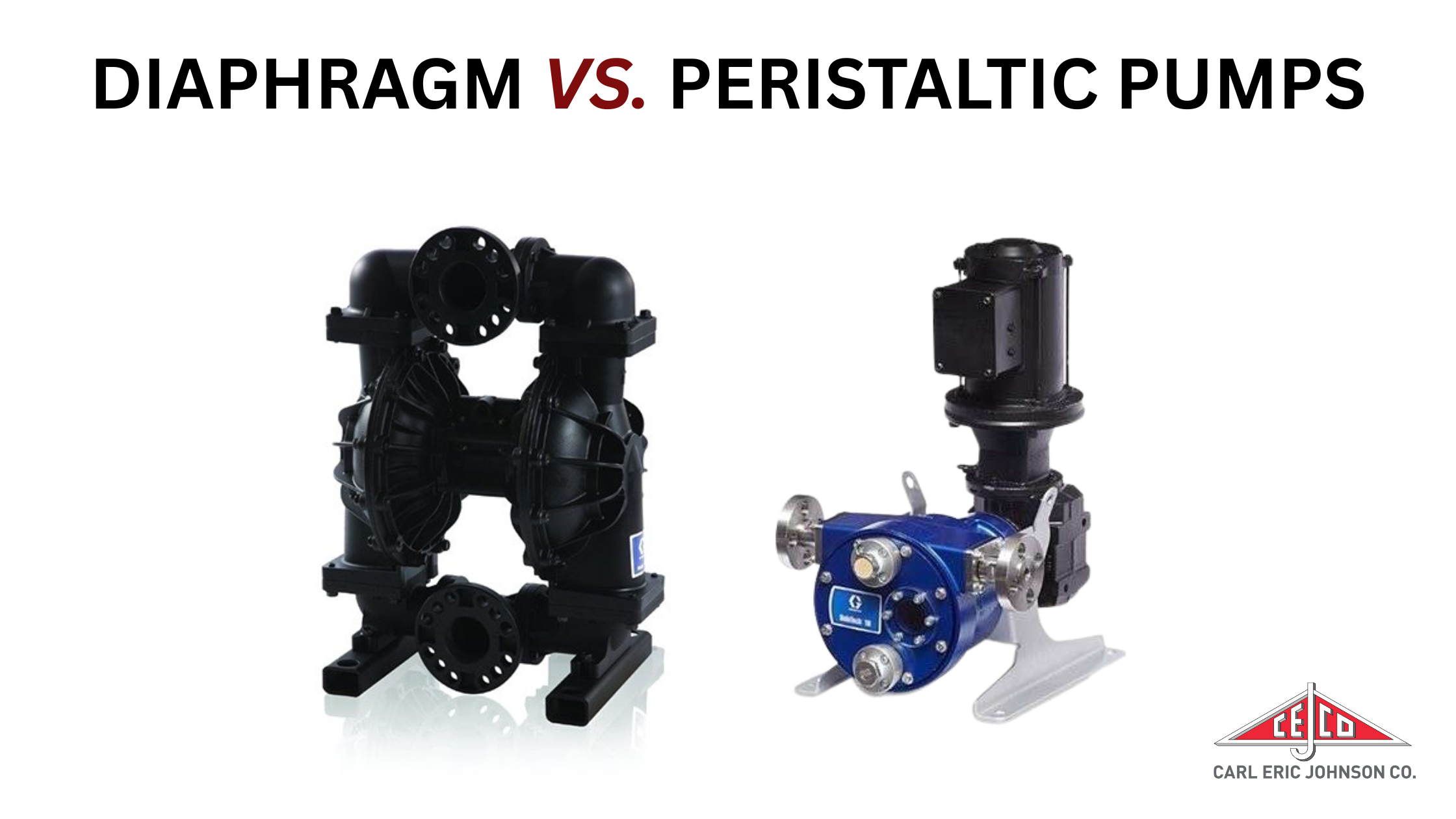Diaphragm vs. Peristaltic Pumps
Which Is Better for Chemical Handling?
When it comes to chemical handling, selecting the right pump is critical for ensuring safety, efficiency, and long-term performance. Two popular pump technologies in chemical transfer applications are diaphragm pumps and peristaltic pumps. Both types of pump offers unique advantages depending on the chemical properties, flow requirements, and system design.
At Carl Eric Johnson Co. (CEJCO), we help facilities across the Southeast choose the right chemical process equipment for their exact needs. In this article, we compare diaphragm vs. peristaltic pumps to help you decide which is better for your chemical handling application.

What Are Diaphragm Pumps?
Diaphragm pumps, also known as air-operated double diaphragm (AODD) or mechanically actuated diaphragm pumps, use a flexible membrane to move fluid through check valves. They are widely used in chemical processing for their ability to handle aggressive, corrosive, and viscous fluids.
Benefits of Diaphragm Pumps:
- Chemical compatibility: Ideal for acids, solvents, and slurries
- Self-priming and can run dry
- Seal-less design minimizes leak risks
- Suitable for both continuous and intermittent duty
- Can be air-operated or electric (EODD) for energy savings
Common Applications:
- Transfer of harsh chemicals
- Drum unloading
- Metering corrosive fluids
- Tank cleaning systems
What Are Peristaltic Pumps?
Peristaltic pumps, also called hose pumps, work by compressing a flexible tube or hose to push fluid forward. With no valves or seals in contact with the process fluid, these pumps offer a contamination-free and leak-proof solution.
Benefits of Peristaltic Pumps:
- No mechanical seals or wetted moving parts
- Excellent for shear-sensitive or abrasive fluids
- Simple maintenance—only the hose/tube contacts the fluid
- Consistent, accurate dosing capabilities
Common Applications:
- Dosing chemicals in water treatment
- Pumping abrasive slurries
- Transferring fluids with solids
- Batch dosing in food or pharmaceutical processing
Diaphragm vs. Peristaltic:
Side-by-Side Comparison
| DIAPHRAGM PUMP | PERISTALTIC PUMP | |
|---|---|---|
| Through check valves and diaphragm | Only hose or tube | |
| ______________ | ______________ | |
| Corrosive, viscous, or hazardous chemicals | Abrasive, shear-sensitive, or solid-laden fluids | |
| ______________ | ______________ | |
| Wide range, moderate precision | Low to medium flow, high dosing accuracy | |
| ______________ | ______________ | |
| Moderate (diaphragm and valve wear) | Low (hose/tube replacement only) | |
| ______________ | ______________ | |
| Self-priming, good suction lift | Excellent suction lift, runs dry without damage | |
| ______________ | ______________ | |
| Air or electric options | Typically electric |
Which Pump Is Right for Your Application?
Choosing between a diaphragm pump and a peristaltic pump depends on your specific chemical, system design, and performance goals.
- Choose diaphragm pumps for high-viscosity or corrosive fluids, flexible installation, and rugged environments.
- Choose peristaltic pumps for precision chemical dosing, minimal maintenance, and when avoiding cross-contamination is critical.
Need Help Choosing the Right Chemical Pump?
At CEJCO, our team of engineers and technical specialists can guide you through the selection process. Whether you’re upgrading your facility, scaling production, or solving a tough pumping challenge, we’re here to help. We represent industry-leading pump manufacturers and offer full application support.
Contact us today to discuss your project needs or request a quote!
